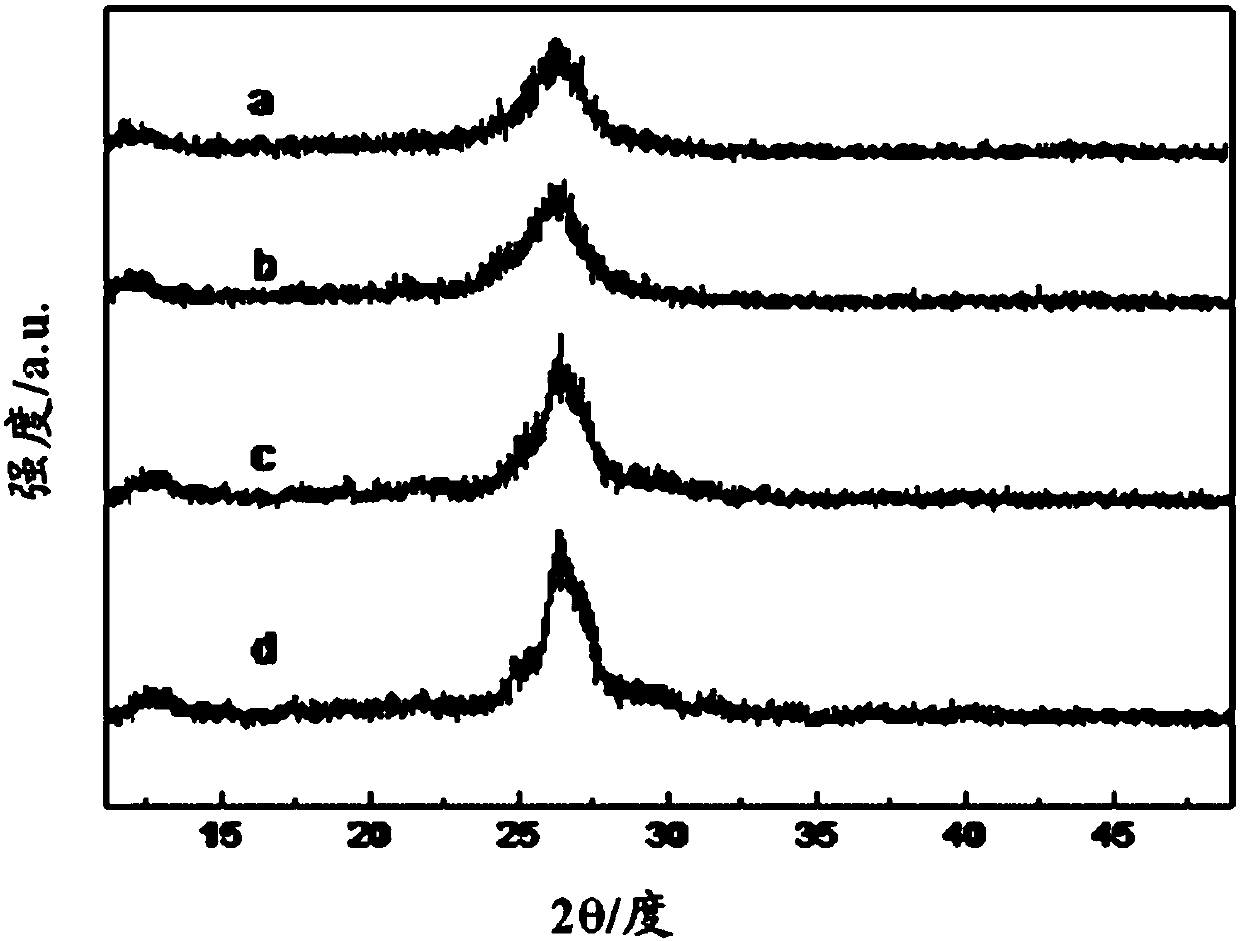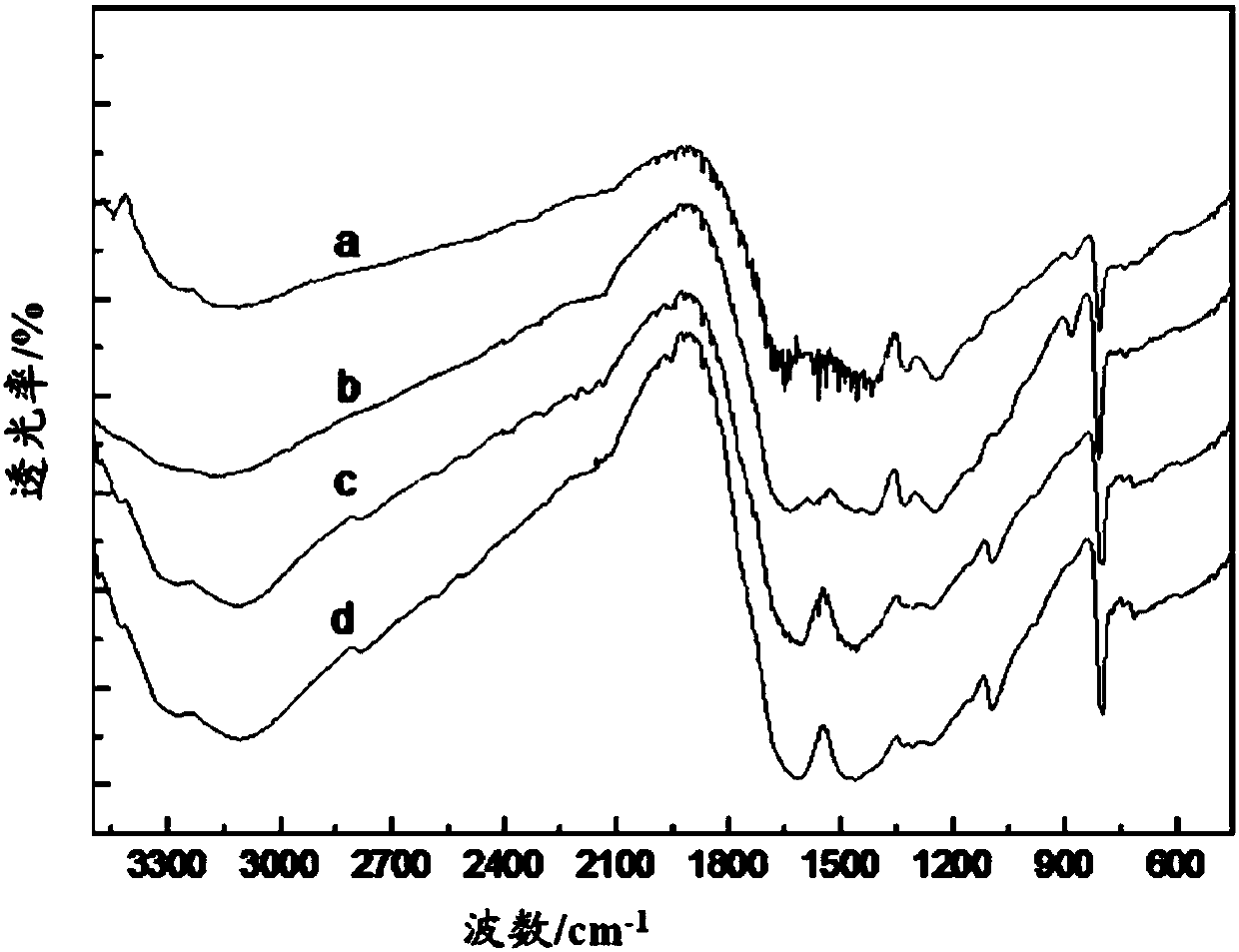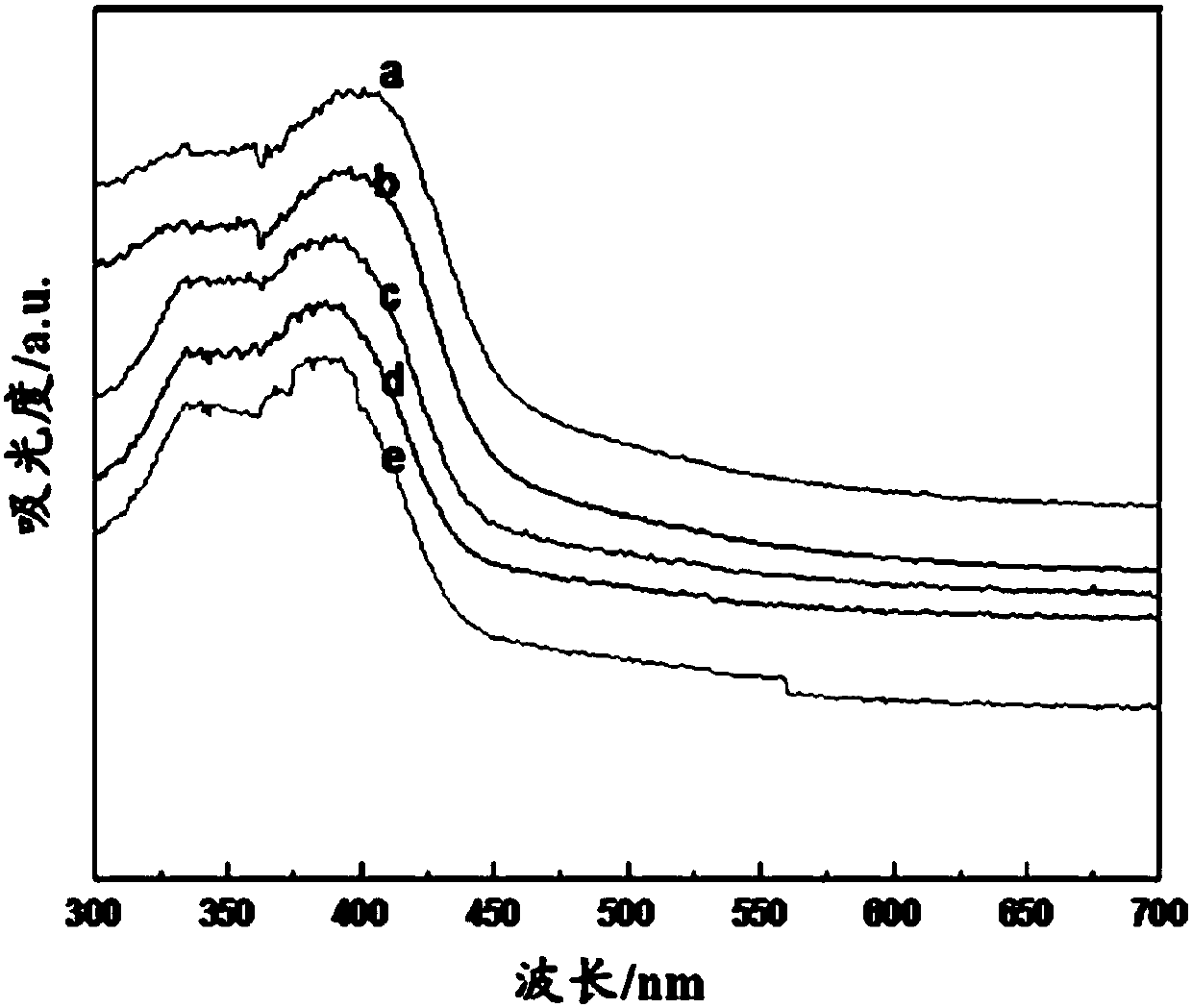Novel photocatalyst K-g-C3N4 as well as preparation and application thereof
A photocatalyst, k-g-c3n4 technology, applied in the field of photocatalysis, can solve the problem that the catalytic performance of photocatalyst has not been reported
- Summary
- Abstract
- Description
- Claims
- Application Information
AI Technical Summary
Problems solved by technology
Method used
Image
Examples
Embodiment 1
[0047] Accurately weigh 2.0000g of dicyandiamide into a 50mL beaker, add about 10mL of deionized water to dissolve. Under vigorous stirring, after dicyandiamine is completely dissolved, accurately measure 10 mL of potassium hydroxide solution (concentration is 0.02 mol / L) with a graduated cylinder and add it to the reaction system to obtain a suspension;
[0048] Heat the obtained suspension to 100°C, remove a large amount of water in the reaction system, and dry the solid in an oven at 80°C;
[0049] Put the evaporated solids in a crucible and place them together in a muffle furnace for calcination at 550°C for 2 hours, with a heating rate of 5°C min -1 After the calcination is completed, the product is cooled to room temperature, ground into powder with an agate mortar, placed in a sample bag, sealed and protected from light, stored in a dry place, and labeled. The obtained product was named K(0.02)-CN.
Embodiment 2
[0051] Use an electronic balance to accurately weigh 2.0000g of dicyandiamide and place it in a 50mL beaker, add about 10mL of deionized water to dissolve, stir vigorously, and after the dicyandiamine is completely dissolved, use a graduated cylinder to accurately measure 10mL of hydrogen Potassium oxide solution (concentration is 0.05mol / L) is added in the reaction system, obtains suspension;
[0052] Heat the obtained suspension to 100°C, remove a large amount of water in the reaction system, and dry the solid in an oven at 80°C;
[0053] Then calcined in a muffle furnace at 550°C for 2h, the heating rate is 5°Cmin -1 , when the product is cooled to room temperature, grind it into powder with an agate mortar, put it in a sample bag, seal it away from light, store it in a dry place, and stick a label. The obtained product was named K(0.05)-CN.
Embodiment 3
[0055] Accurately weigh 2.0000g of dicyandiamide and place it in a 50mL beaker, add about 10mL of deionized water to dissolve, stir vigorously, after the dicyandiamide is completely dissolved, accurately measure 10mL of potassium hydroxide solution with a graduated cylinder (Concentration is 0.07mol / L) is added in the reaction system, obtains suspension;
[0056] Heat the obtained suspension to 100°C, remove a large amount of water in the reaction system, and dry the solid in an oven at 80°C;
[0057] Put the evaporated solid in a crucible, and then calcinate it in a muffle furnace at 550°C for 2h, and the heating rate is 5°Cmin -1 After calcination, the product is cooled to room temperature, ground into powder with an agate mortar, placed in a sample bag, sealed and protected from light, stored in a dry place, and labeled. The obtained product was named K(0.07)-CN.
PUM
 Login to View More
Login to View More Abstract
Description
Claims
Application Information
 Login to View More
Login to View More - R&D
- Intellectual Property
- Life Sciences
- Materials
- Tech Scout
- Unparalleled Data Quality
- Higher Quality Content
- 60% Fewer Hallucinations
Browse by: Latest US Patents, China's latest patents, Technical Efficacy Thesaurus, Application Domain, Technology Topic, Popular Technical Reports.
© 2025 PatSnap. All rights reserved.Legal|Privacy policy|Modern Slavery Act Transparency Statement|Sitemap|About US| Contact US: help@patsnap.com



